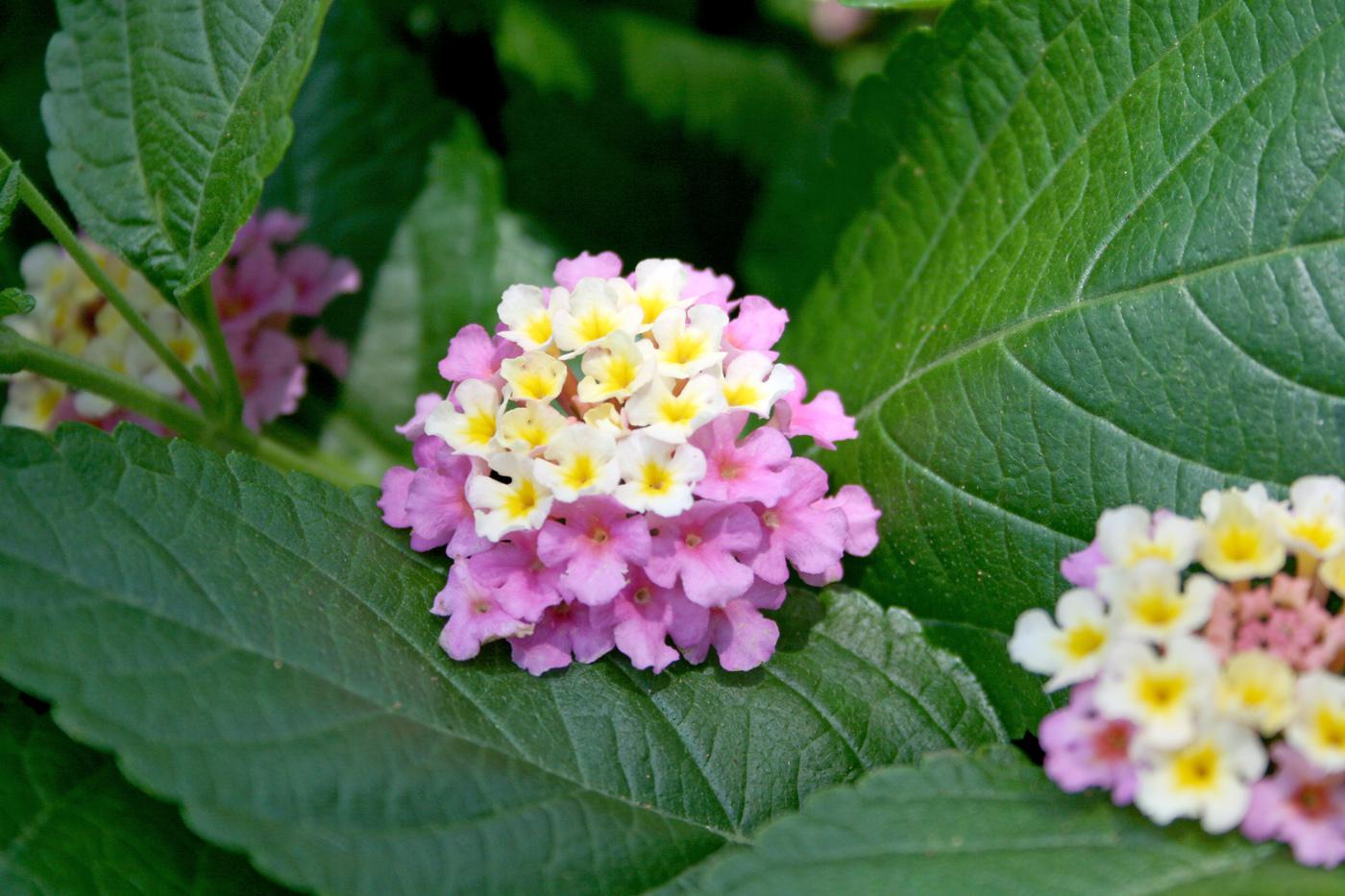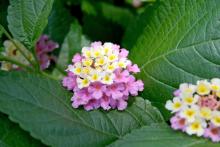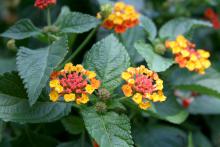Information Possibly Outdated
The information presented on this page was originally released on June 10, 2010. It may not be outdated, but please search our site for more current information. If you plan to quote or reference this information in a publication, please check with the Extension specialist or author before proceeding.
Lantana thrives in summer heat
If you’re looking for a way to keep your flowerbeds pretty after your pansies have worn out, consider using lantanas as your transition. They will provide fantastic color through the hottest temperatures.
Lantana has been selected twice as a Mississippi Medallion winner. The very first medallion plant in 1996 was New Gold lantana, and its bright, golden-yellow flowers are outstanding. The second Medallion win came in 2003 to Sonset lantana, whose flowers start as yellow and transition through orange, red, magenta and purple.
Many older lantana selections are big plants. New Gold is 2-3 feet tall, and Sonset can be up to 4 feet tall. Be sure to space these lantanas 2-4 feet apart.
These lantana varieties can still be found at garden centers, but lantana breeders are making exciting progress. They are working on non-stop blooming varieties, as well as smaller lantanas. This opens up a whole new market for lantanas to be used in place of bedding plants.
The Lucky series are 12-16 inches tall and wide. Colors include rose, gold, peach, white and yellow. Set these out with 12 inches between plants.
The Landmark series are all multi-colored flowers, so you can enjoy a range of color transitions. Selections include Blaze, Peach Sunrise and Citrus. Landmark lantana grows to be 15-20 inches tall and 18-24 inches wide. Plant 15 inches apart for greatest landscape effect.
Lantana Dallas Red is a bold selection with large clusters of red flowers that fade to orange and yellow with maturity. This plant will grow to 20 inches tall and 24 inches wide.
Plant lantanas in full sun for best flowering performance. Landscape beds should be well-drained and amended with organic matter. Once established, lantanas are drought tolerant. During periods of low rainfall and high temperatures, their flower colors will make your landscape pop.
Prune them lightly through the summer to help maintain the size you want and to stimulate more flowering and a bushier structure. Fertilize once a week with water-soluble fertilizer to maintain flowering potential.
Lantanas are native to the New World and are related to verbenas. In some areas, the common name for lantana is shrub verbena, but the botanical name is Lantana camera. Lantanas are hardy to about 32 degrees and are perennial most years on the Gulf Coast. Using a layer of pine straw as a blanket may provide enough winter protection to keep them perennial in north Mississippi.
Lantanas are excellent when used in butterfly and hummingbird gardens. Their small, funnel-shaped flowers hold the sugary nectar these garden entertainers are looking for. Good companion plants for lantana include penta, butterfly bush and butterfly weed.
Pair lantanas with Mississippi Medallion-winners Biloxi Blue verbena and Victoria Blue salvia, and you’ll have a winning combination for every Mississippi garden.









